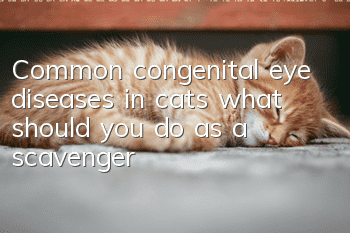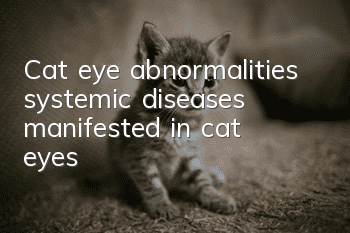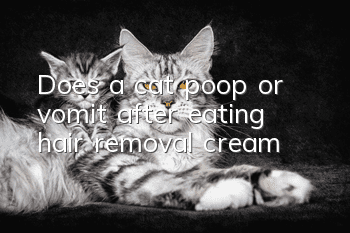Common congenital eye diseases in cats, what should you do as a scavenger?

Most cats have a pair of bright eyes
Common congenital eye diseases in cats, what should you do as a shit collector? Jewel-like eyes are the most charming thing about most cats. But sometimes, this gem may encounter some unforeseen changes, such as congenital developmental abnormalities, which will not only make the cat's eyes dull, but may also lead to the development of some diseases and affect the cat's life.
Congenital eye diseases often appear slowly as cats develop. According to the British "Mirror" report, the two-year-old cat Matilda suffered from a type of eye disease. A congenital eye disease with bulging black eyeballs that resemble alien creatures. His peculiar appearance has made him famous on the Internet, with more than 30,000 fans on the social networking site Instagram.
It is reported that Matilda suffers from an eye disease called congenital lens dislocation, which causes blurred vision and bulging of the eyeballs. Matilda's owner appealed for treatment on an Instagram account set up specifically for her, and learned that Matilda's brothers all suffered from the same disease.
Now after consulting with veterinarians and confirming that the disease is not painful, Matilda’s owner has decided not to undergo surgery and will keep her in her current healthy and happy state. Her owner also said that Matilda is a perfect kitten and will always love and be by her side.
What are other congenital developmental abnormalities in cats?
1. Dermoid cyst
Congenital, tumor-like, island-shaped variant skin tissue involving the eyelids, conjunctiva or cornea; sometimes more than one tissue is affected; Affected animals may have symptoms of blepharospasm and epiphora.
2. PPM
It is the remnant of the pupillary membrane from the ciliary area of the iris to the corneal endothelium, anterior lens capsule, or only connecting the edge of the pupil; it may be related to iris defects, cataracts, and Coexistence of uveal defects; can occur in cats of any breed;
3. Iris cyst
A ring-shaped, pigmented or free anterior chamber adhering to the iris or corneal endothelium Depigmented globular structures.
4. Congenital glaucoma and bull's eye
Can be seen in cats; increased tear production, enlarged, red and painful eyeballs can be seen.
5. Congenital pupillary abnormalities
Polycoria (more than one pupil); acoria (no pupil); missing iris; pupil deformation (abnormal pupil shape).
6. Congenital cataract
Primary, often hereditary or secondary to other progressive defects; often accompanied by other congenital lens abnormalities, such as microphakia and conus Lens, spherical lens (often bulging of the posterior lens capsule) and lens coloboma (notch in the equatorial part of the lens, which may also be accompanied by defects in the ciliary body and ciliary zonules); often accompanied by leukocoria.
7. PHTVL and PHPV
Genetic defects; tableSome blood vessels are now transparent; the vitreous body, lens and lens capsule show progressive distortion; cataracts and leukocoria may be seen, or bleeding in the lens causes red light to be reflected in the pupil area (rare), or new blood vessels in the posterior lens capsule.
8. Photoreceptor dysplasia
Visible at birth in rod cells, cones, or both; direct pupillary light reflex and indirect pupillary light reflex Abnormal reflexes, or the affected animal is slow to react when opening its eyes.
9. Dysplasia of rod and cone cells in cats
Can be seen in Persian cats (details), Abisoyan cats and certain American hybrid breeds; affected cats Mydriasis can be seen at 2-3 weeks of age, nystagmus can be seen at 4-5 weeks of age, retinal degeneration can be found through ophthalmoscopy at 8 weeks of age, and blindness can be found in affected cats a few weeks later.
- How many days will it take for a cat's nails to grow back if they are cut to the bleeding line?
- Osteoarthritis in elderly cats, feline osteoarthritis is an irreversible process!
- Why do cats get black chins?
- How to diagnose and treat renal failure in cats? Dialysis treatment for renal failure in cats!
- Will cats not be able to walk if they put on shoes?
- What causes dandruff on cats? Is it a skin disease?
- How to care for a cat during labor?
- What to do if your cat has hematuria?
- What should I do if my kitten has bad breath?
- Why do cats fall from buildings?



